Armenian Cuisine
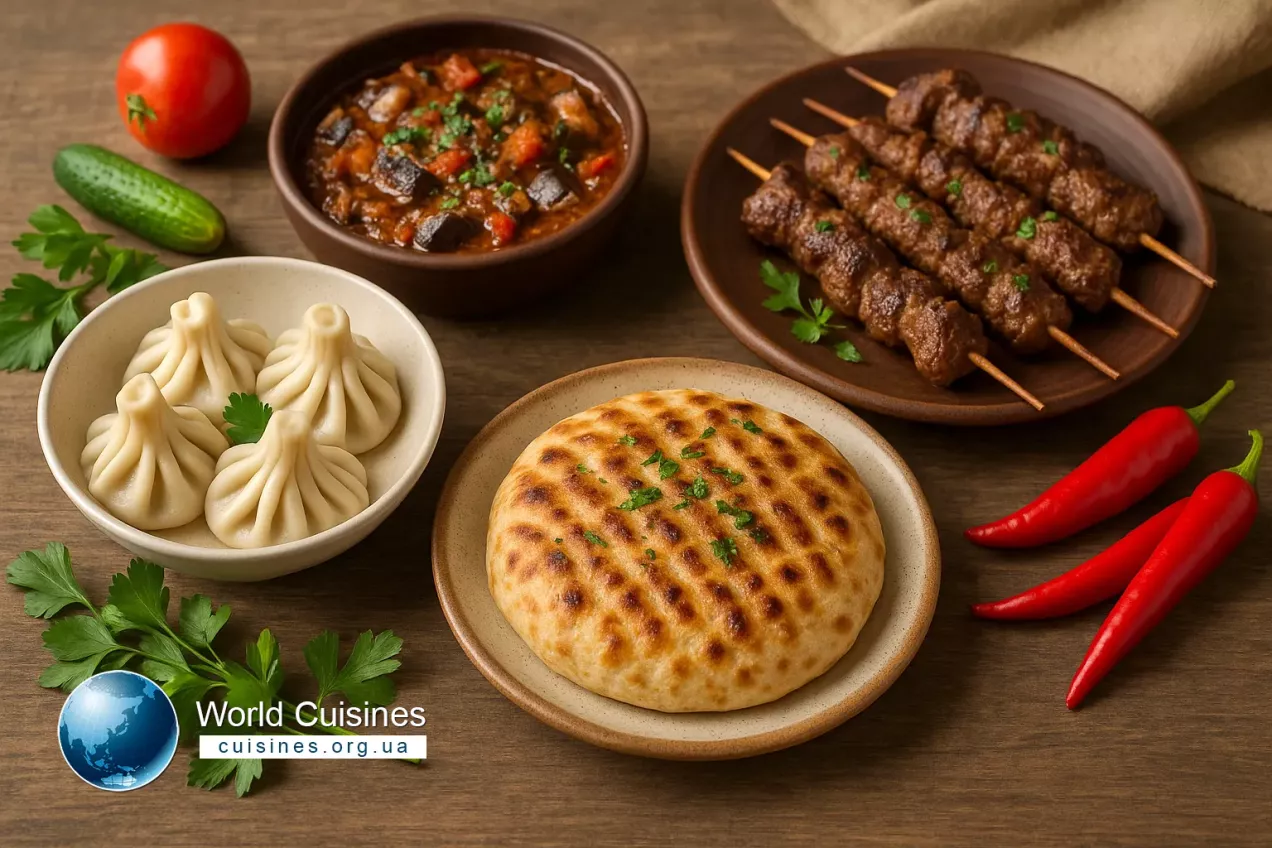
Armenian cuisine is a time-honored culinary tradition rooted in the mountainous landscapes of the South Caucasus. It reflects the deep history, agricultural richness, and cultural resilience of the Armenian people. With influences dating back thousands of years, it incorporates techniques and ingredients passed down through generations. The cuisine is primarily centered in the Republic of Armenia but extends across the Armenian Highlands and diasporic communities worldwide. Its core features are based on locally grown produce, seasonal vegetables, legumes, grains like bulgur and wheat, and an abundance of fresh and dried herbs. A distinctive trait of Armenian cooking is its strong emphasis on simplicity, purity of flavors, and traditional preparation methods, such as baking in tonir ovens or slow cooking in clay pots. Due to Armenia’s historical crossroads between East and West, the cuisine has absorbed and transformed influences from Persian, Turkish, Georgian, and Arabic culinary practices – yet remains distinctively Armenian through its focus on hospitality, ritual meals, and deep spiritual ties to food. Dishes like khorovats (grilled meats), harissa (wheat and meat porridge), and lavash (thin flatbread) are not only staples of the daily table but also symbols of identity and continuity.
Overview of Armenian Cuisine
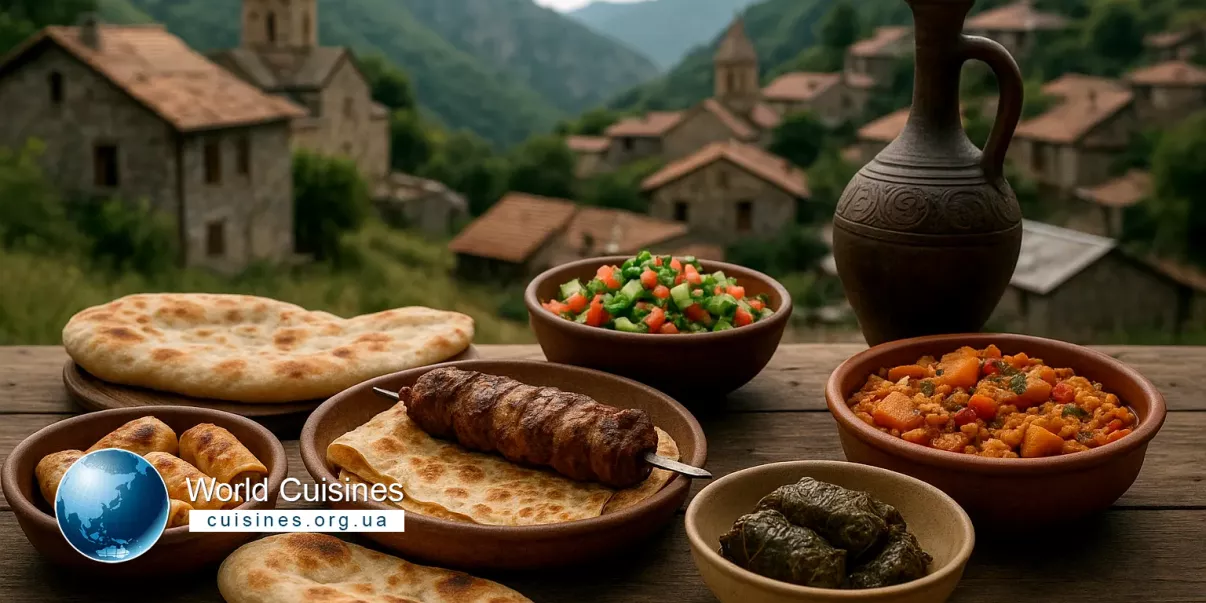
Traditional Armenian foods prepared in mountain villages, reflecting the region’s rustic culinary heritage.
Armenian cuisine covers a wide geographical area, reaching beyond the borders of the Republic of Armenia into parts of modern-day Turkey, Iran, Georgia, and the Middle East where Armenian communities have settled. Despite this dispersion, the cuisine maintains a cohesive identity rooted in shared traditions and values, particularly around the table. Throughout history, food has served as a marker of resilience and cultural preservation for Armenians. Culinary practices have been shaped not only by environment and agriculture but also by religious customs, community gatherings, and seasonal cycles. Meals are often designed for sharing, reinforcing bonds across families and generations. From the use of clay ovens to the preparation of ceremonial dishes, the cuisine continues to mirror the history and endurance of the Armenian people.
Main Features and Ingredients
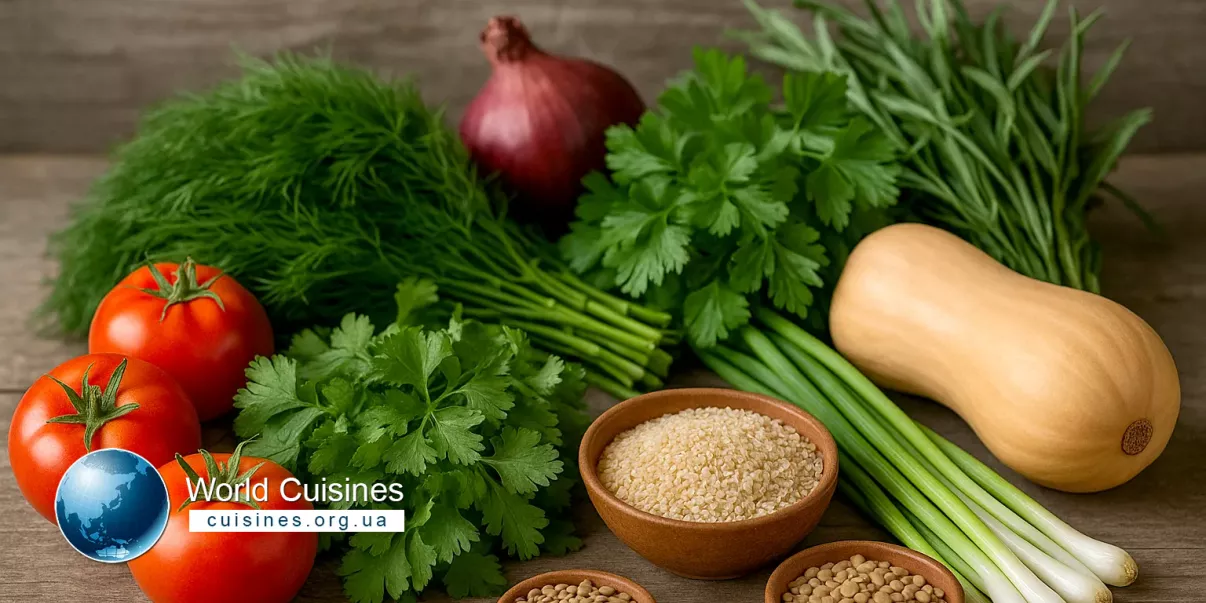
Locally grown herbs, grains, and vegetables form the foundation of Armenian cooking.
Armenian cooking relies on an abundant array of fresh ingredients and traditional preservation methods that suit both climate and lifestyle. Vegetables like eggplants, tomatoes, peppers, and cucumbers are central, and are often pickled, grilled, or served fresh in salads. Grains such as bulgur and rice support a variety of dishes, from soups to festive pilafs. Herbs are used not just as flavoring but as foundational elements – tarragon, mint, basil, and parsley are woven into almost every dish. Garlic, onions, and yogurt-based sauces add layers of flavor and texture. Fermentation and sun-drying are common preservation methods that allow foods to be stored through the winter months, reflecting both practicality and culinary ingenuity. Proteins like lamb, beef, and poultry are usually prepared with restraint in seasoning, allowing the quality of the meat and method of preparation to shine. Cooking methods like open-fire grilling, clay-pot stewing, and tonir baking continue to define the cuisine's rustic character.
Popular Dishes of Armenian Cuisine
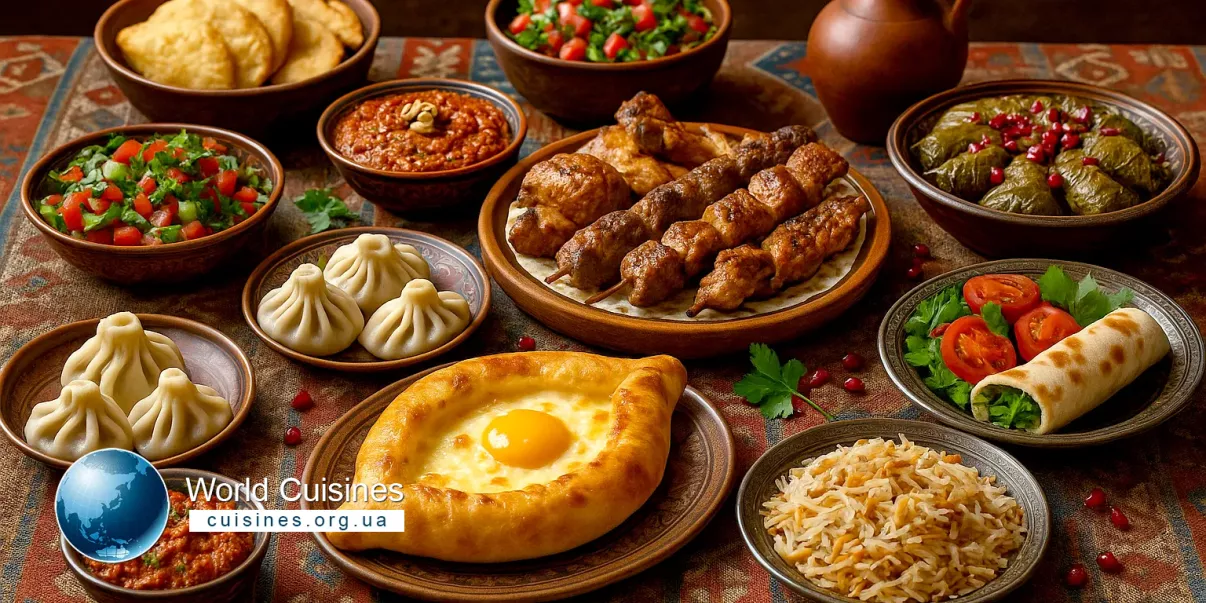
A festive table with classic Armenian dishes often served at family celebrations and holidays.
The Armenian table is rich with iconic dishes that speak to its layered heritage. Khorovats, the nation’s signature grilled meat, is marinated and cooked over hot coals, often served with fresh herbs and lavash. Harissa is a celebratory dish of slow-cooked wheat and meat, usually prepared for religious festivals. Dolma, made from grape leaves or cabbage stuffed with minced meat and rice, is a family favorite and varies by season and region. Spas is a tangy yogurt soup with herbs and grains, consumed warm in winter and cold in summer. Ghapama is a unique festive dish where a pumpkin is stuffed with rice, dried fruits, and spices, then baked whole. Lavash, perhaps the most recognizable element of the cuisine, is a soft flatbread that carries deep symbolic meaning and accompanies almost every meal. Basturma, a robust air-dried beef coated in fenugreek paste, offers a burst of flavor in small slices.
Traditional Recipes
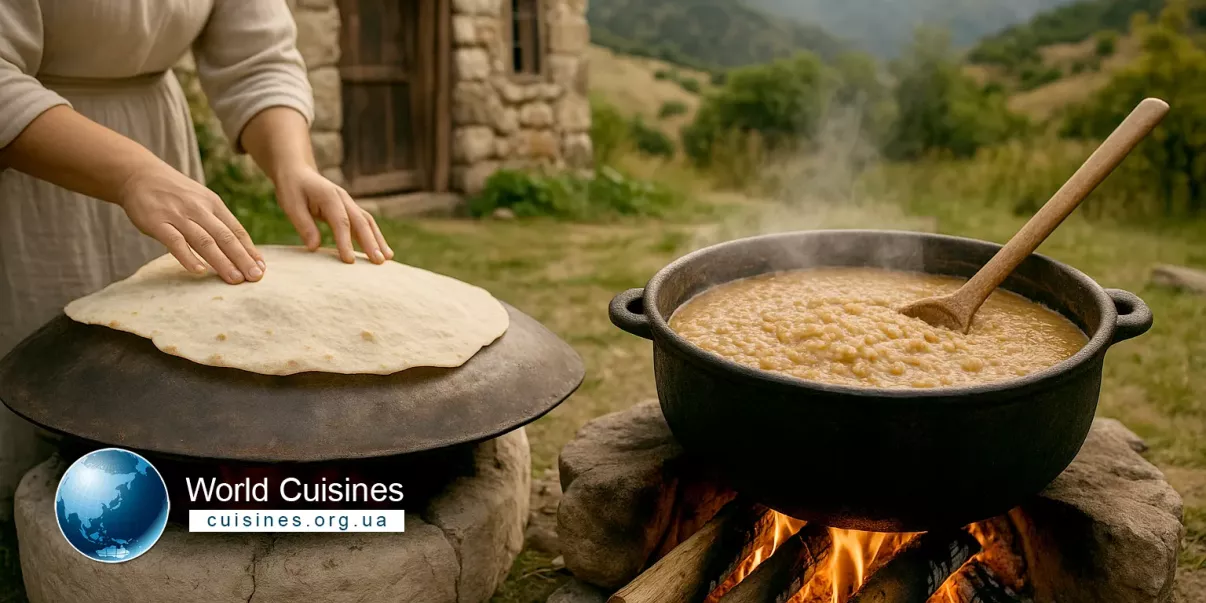
Lavash and harissa being prepared in traditional countryside settings – staples of Armenian cuisine.
Traditional Armenian recipes are rooted in the rhythm of the seasons and the rituals of family life. Food preparation is often a collective act, with generations participating in rolling dough, seasoning meat, or shaping pastries by hand. The making of lavash, for example, is both a domestic and social tradition, typically performed by women baking together in a tonir. This process, recognized by UNESCO, reflects the cultural depth behind everyday foods. Harissa, considered a dish of endurance and devotion, is made from cracked wheat and lamb, simmered gently overnight to achieve a porridge-like texture. It is served especially during commemorative events and is associated with sacrifice and togetherness. Another dish, zhingyalov hats, combines over a dozen wild herbs stuffed into flatbread, showcasing the intimate relationship between nature and cuisine in Armenian villages. Meanwhile, gata – a sweet, flaky pastry filled with butter and sugar – is more than just dessert: it is tied to celebrations, weddings, and symbols of prosperity. These recipes are not only delicious but also represent memories, values, and a way of life.
Typical Spices and Flavors
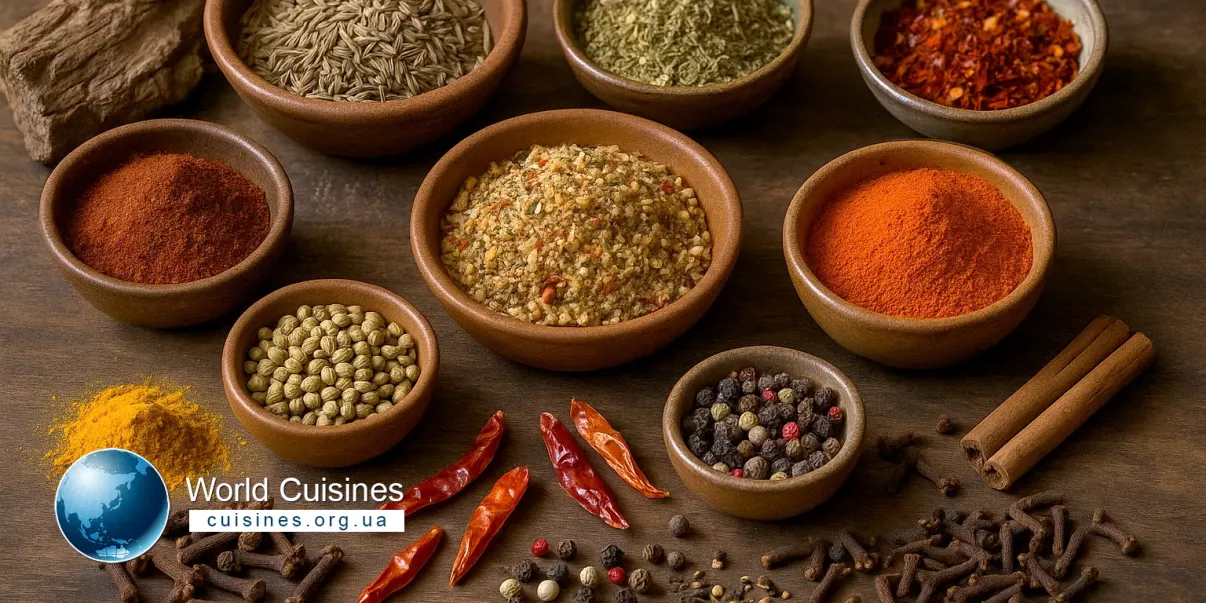
Aromatic spice blends and seasonings that define the bold, earthy flavors of Armenian food.
While Armenian cuisine is not known for heat or overpowering spices, it offers a rich tapestry of herbal and aromatic profiles. Fenugreek, black pepper, paprika, and dried mint are used sparingly but with precision. Spice blends such as chaman – based on fenugreek and garlic – are distinctive and especially prevalent in cured meats like basturma. Sourness is often introduced through matsun (fermented yogurt), sumac, or pomegranate, balancing out the richness of meats and legumes. Sweet spices like cinnamon or clove make occasional appearances in festive rice or pastries. The flavor palette is gentle, earthy, and highly aromatic, creating dishes that comfort rather than overwhelm.
Influence and Global Spread
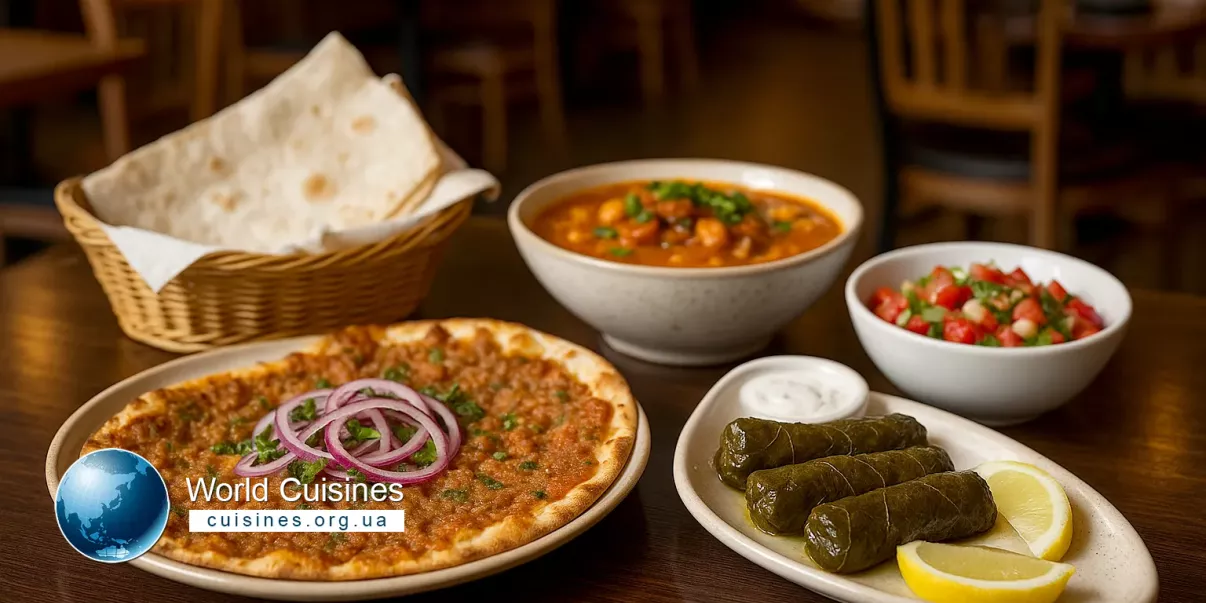
Modern interpretations of Armenian dishes featured in restaurants around the world.
Armenian cuisine has found a home well beyond the borders of Armenia, thanks to the widespread diaspora that formed during the 20th century. In cities like Los Angeles, Beirut, Paris, Armenian restaurants preserve traditional methods while blending local tastes. The cuisine’s adaptability – paired with strong roots – makes it a powerful cultural ambassador. Armenian dishes have also influenced and been influenced by neighboring food cultures. Similarities in technique can be found in Georgian, Iranian, and Turkish cuisines, though Armenian recipes often emphasize different ingredients or preparation methods. International recognition of dishes like lavash or basturma underscores their culinary and cultural value on a global scale.